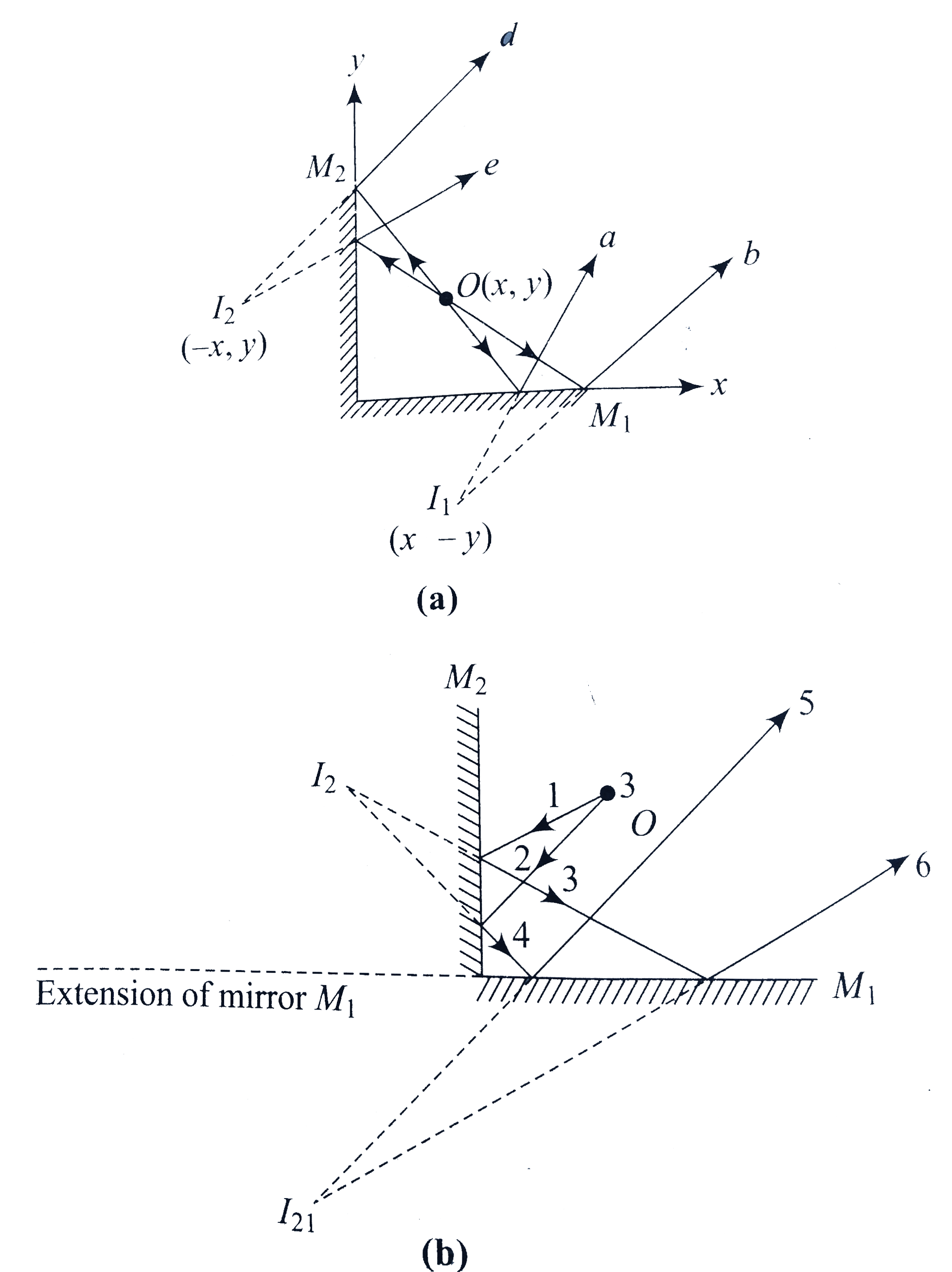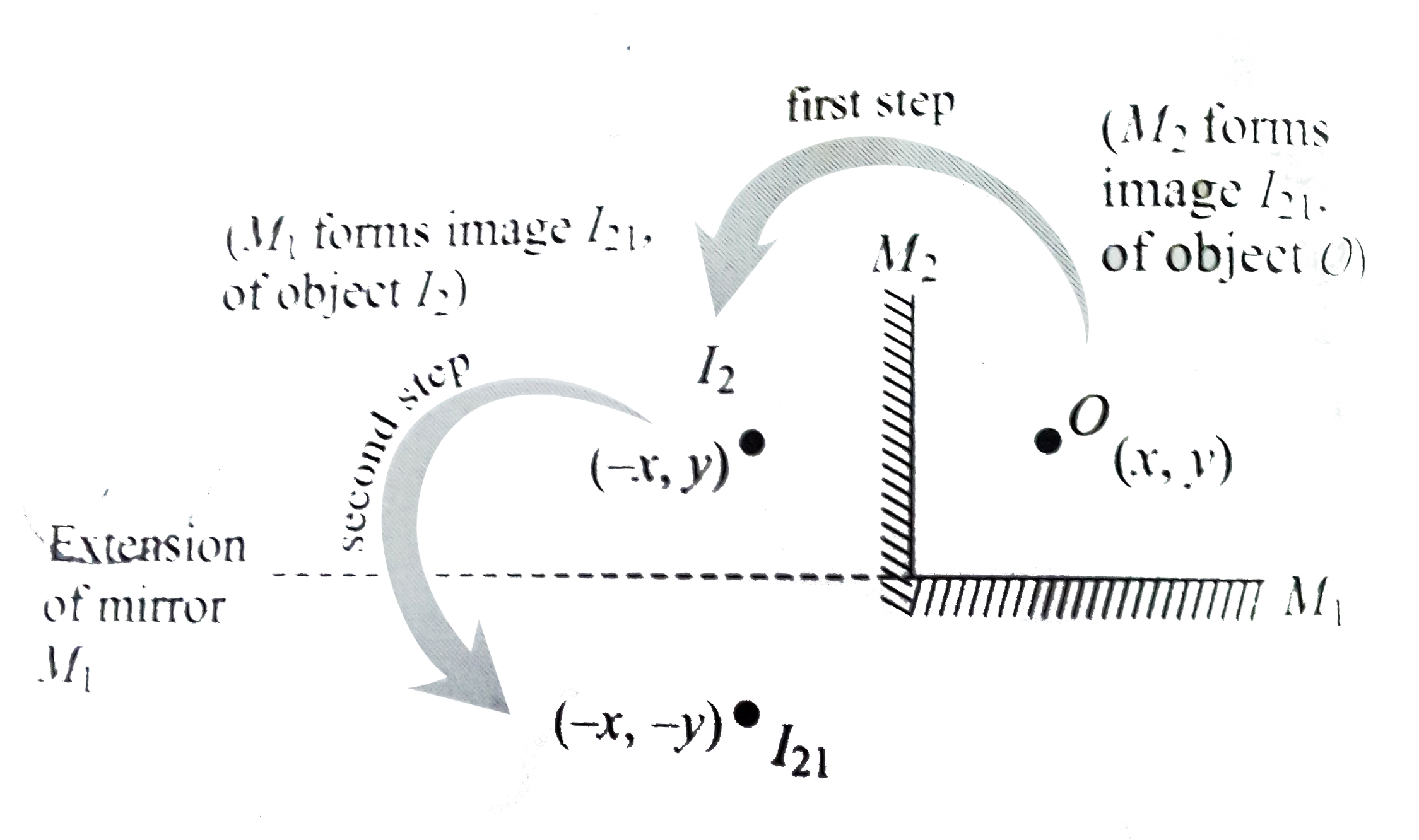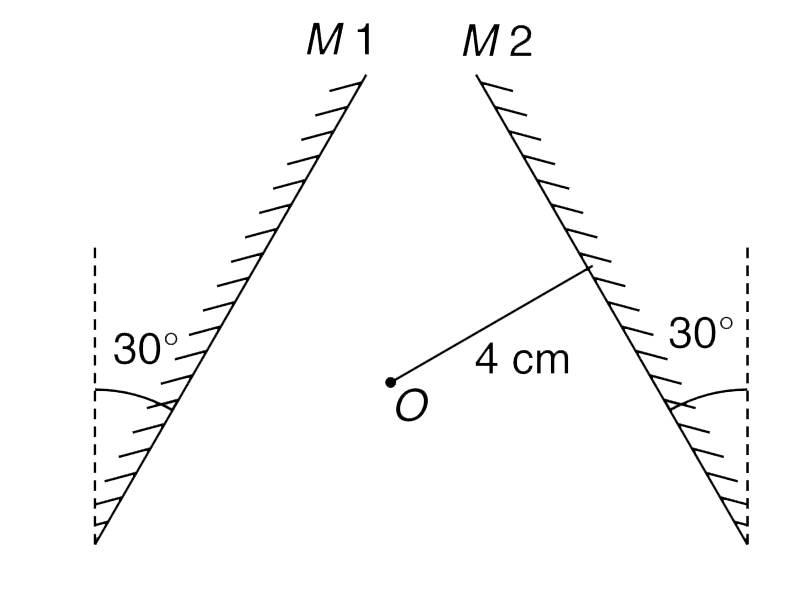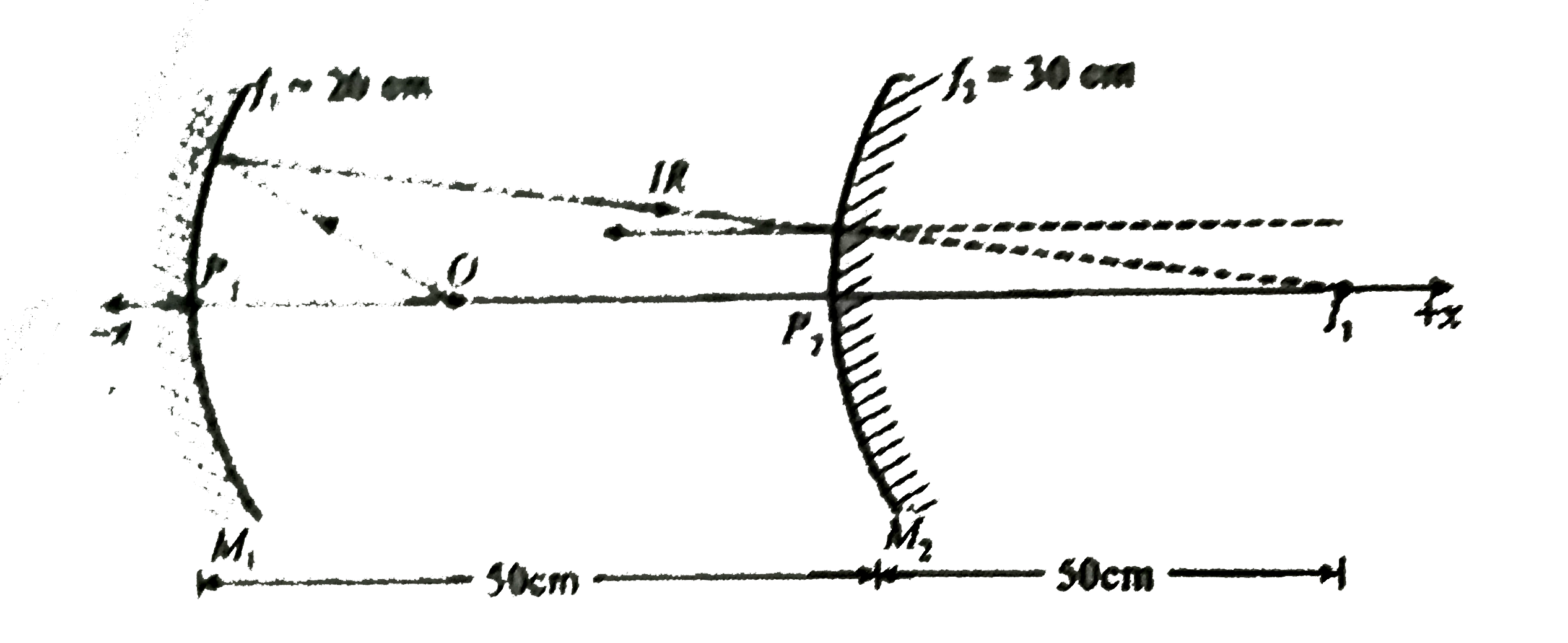Consider two perpendicular mirrors M1 and M2 and a point object O. Taking origin at the point of intersection of the mirrors and the coordinates of object as (x,y), find the position and number of images.
As shown in Fig. , rays a and bb strike mirro M1 only and these rays will form image I1 at (x,-y), such that O and I1 are equidistant from mirror M1. These rays do not form further image because they do not strike any mirror again. Similarly, rays 'd' and 'e' strike mirror M2 only and these rays will form image I2 at (-x,y), such that O and I2 are quidistant from mirror M2.
Now, consider those rays which strike mirror M2 first and then the mirror M1.
For incident rays 1,2 object is O, and reflected rays 3,4 form image I2.
Now, rays 3, 4 incident on M1(object is I2) reflect as rays 5,6 and form image I21. Rays 5, 6 do not strike any mirror, so image formation stops.
I2 and I21 are equidistant from M1. to summarize, see Fig.
For rays reflecting first from M1 and then from M2, first image I1 ( at(x,-y)) will be formed. I1 will act object for mirror M2 and then its image I12 (at (-x, -y))willbeformed.I_(12)andI_(21) coincide.
Hence, three images are formed.
 ,
,
 ,
,
Topper's Solved these Questions
- GEOMETRICAL OPTICSBOOK - CENGAGE PHYSICSCHAPTER - GEOMETRICAL OPTICSEXERCISE - Solved Examples
15 Videos
- GEOMETRICAL OPTICSBOOK - CENGAGE PHYSICSCHAPTER - GEOMETRICAL OPTICSEXERCISE - Exercise1.1
14 Videos
- FRICTIONBOOK - CENGAGE PHYSICSCHAPTER - FRICTIONEXERCISE - QUESTION BANK
1 Videos
- GRAVITATIONBOOK - CENGAGE PHYSICSCHAPTER - GRAVITATIONEXERCISE - Question Bank
39 Videos
Similar Questions
If the straight line joining the origin and the points of intersection of y=mx+1andx2+y2=1 be perpendicular to each other , then find the value of m.
View SolutionTwo mirrors are inclined by an angle 30∘. An object is placed making 10∘ with the mirror My Find the positions of the first two images formed by each mirror. Find the total number of images.
View Solution
Knowledge Check
In two positions concave mirror produces magnified image of given object. The positions are
A(i) At C, (ii) at FB(i) Between F and C, (ii) Between P and FC(i) Beyond C, (ii) Between P and FD(i) At C, (ii) between P and FA point object is placed at the focus of a convex mirror the image will be formed at
AInfinityBCentre of curvatureCAt focus itselfDNone of theseA concave mirror forms an image I corresponding to a point object O . The equation of the circle intercepted by the xy plane on the mirror is
_S01_051_Q01.png) Ax2+y2=1600Bx2+y2−20x−1600=0Cx2+y2−20x−1500=0Dx2+y2−20x+1500=0
Ax2+y2=1600Bx2+y2−20x−1600=0Cx2+y2−20x−1500=0Dx2+y2−20x+1500=0
Two plane mirrors M1 and M2 are inclined at 30° to the vertical. A point object (O) is placed symmetrically between them at a distance of 4 cm from each mirror. Find the distance of the object from the second image formed in mirror M1.

View SolutionFind out the position of the image of an object situated at A in the plane mirror

View SolutionFigure shows two spherical mirrors M1 and M2 on same optical axis at a separation of 50 cm. Apoint object O is placed midway between mirrors in optical axis.Find location & nature of its image after two successive reflections first at M1 then at M2

[75 cm]
View SolutionA point object is placed at the focus of a convex mirror, the image will be formed at
View SolutionA real image of a point object is formed in a mirror when
View Solution
